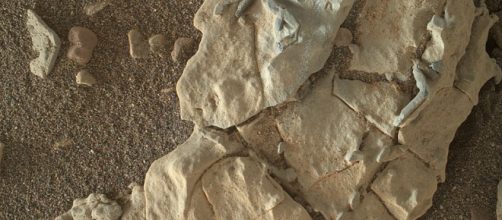Mars rover Curiosity has been on the red planet since August 2012 and has been doing a wonderful job. It has been working nonstop to explore the terrains and send feedback to the scientists on Earth. It is a robot and has been pre-programmed to carry out specific tasks. This technological marvel has provisions of adding new programs based on requirements. That is what ground control at NASA is trying to do.
According to Space, the robot faced a mechanical problem in 2016. Its drill malfunctioned, and it was unable to penetrate into the rock surface.
The drill is installed at the end of the rover's robotic arm, and since it is inoperative, an alternative has to be evolved. That way, the Mars rover will be able to return to its drilling activities.
A solution is on its way
NASA engineers have been working on the problem and have zeroed in on a probable solution. They are trying to make Curiosity work like a human being. The team wants the robot to imitate the actions of a human being and apply pressure to push the arm forward as the drill rotates. The process will be known as extended feed drilling (FED).
Once Curiosity tests out the new technique, the confidence of the team of engineers will increase, and they can get better results from the drilling of rocks on Mars.
In case it is successful, scientists will send the samples to the onboard labs in order to generate useful data for the future.
Curiosity is a wonder
The robot has never been idle and has been climbing Mount Sharp since September 2014. This mountain is nearly 3.5-mile high, and the task of Curiosity is to study the rocks to establish whether Mars had ever hosted lifeforms.
NASA engineers are constantly monitoring its path and, have directed it to reverse and go downhill to another area identified as Vera Rubin Ridge. The scientists have noticed some interesting features and feel it could have more potentials.
Boosted by the success of Curiosity, NASA plans to send more robots to keep it company.
One of these is InSight which is on its way to the red planet. It is equipped with drilling mechanisms to go deep below ground level to collect more information about the planet and will begin work once it lands there. The third is in the pipeline - it is an unmanned helicopter. The Register UK says the helicopter will ride piggyback on the Mars rover to be sent in 2020. It will study the planet from the skies.
Incidentally, there are others in the fray to conquer Mars but, NASA has a clear advantage. The proof lies in Curiosity, which is the pioneer.


